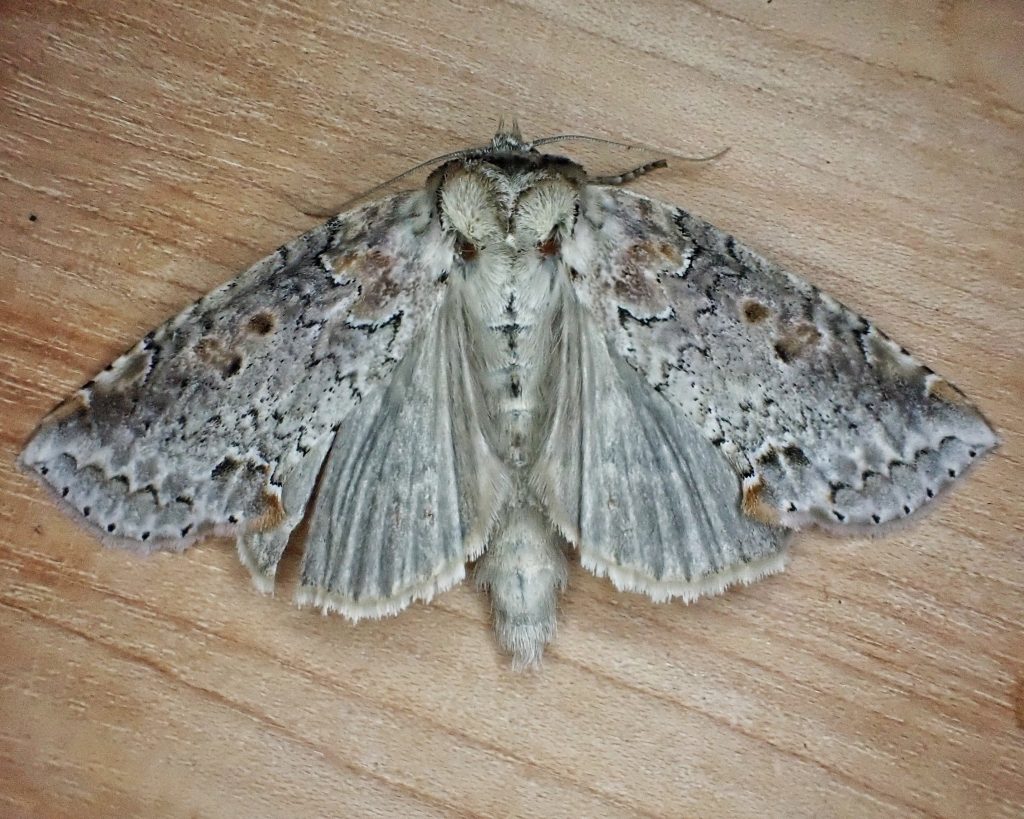
The Chalcoela iphitalis (Sooty-winged Chalcoela) that I posted yesterday was definitely the most interesting moth of the first night, but the most spectacular was surely the Pseudothyatira cymatophoroides (tufted thyatrin, which were formerly called tufted thyatirids, until the former family Thyatiridae was reduced to a subfamily of Drepanidae, so the “id” ending was replaced with an “in” ending). I’ve found this species before, but it was the more brightly colored form, so I didn’t immediately recognize this moth, and I was so excited by its sculpturing that I didn’t even attempt to photograph it in situ for fear it would escape. In fact I was borderline rude to my father, who was in the middle of talking, because I just rushed away from him, digging in my pocket for a container.
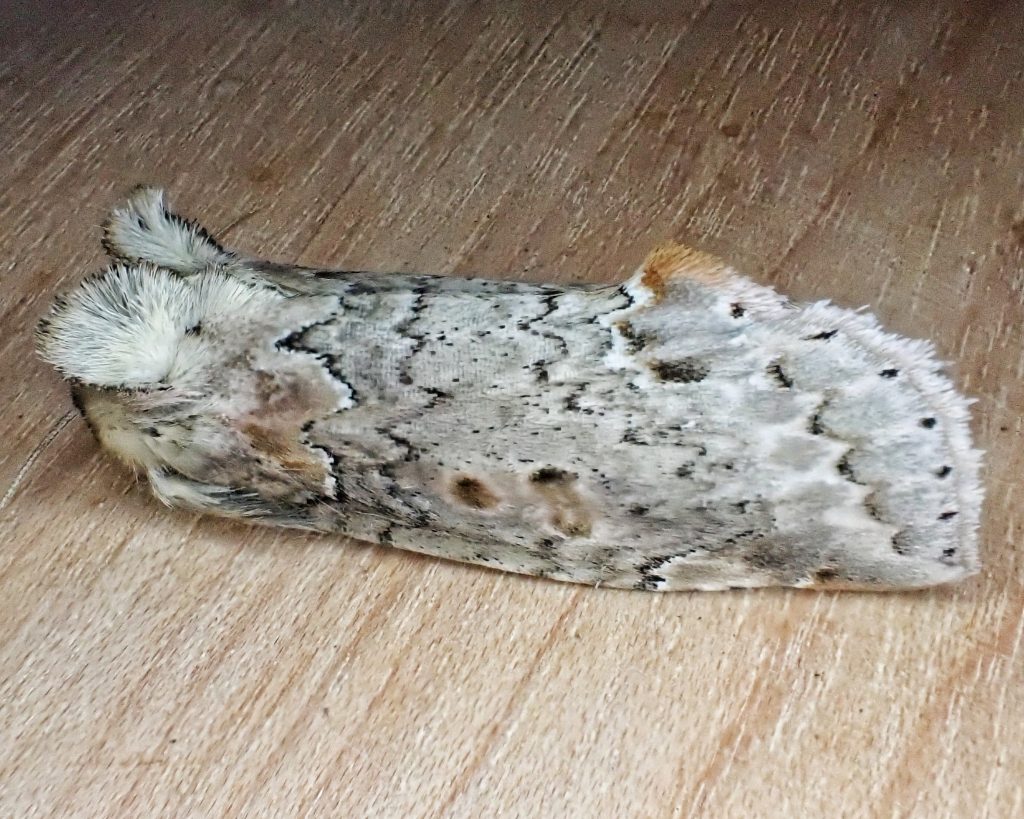
With its wings spread and sculpted hairdo I thought it might be a species of Zale that I’d never even seen photos of, but it looked very different after it closed up during the refrigeration period. And it was when I was photographing it during that period that it started to remind me of the tufted thyatirids I’d seen before, and then I remembered there was a grey form. After a few photos I covered it with a container and walked away, and once it warmed back up it cooperated by spreading its wings again. After some photos and a quick perusal of Moth Photographers Group to confirm its identity, I set it free on the porch with the dozen or so other moths for which I knew the label.
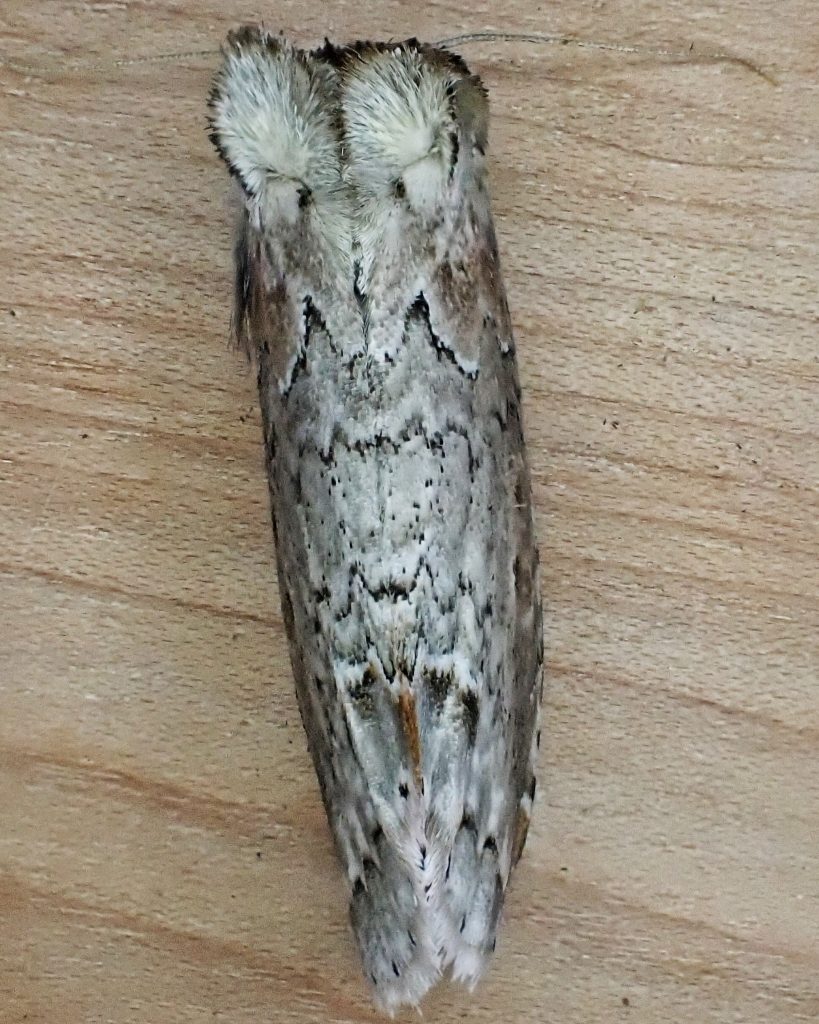
Description– “A medium-size (3.8-4.4 cm wingspan) moth, with two very different forms. The nominate form has violet grey-brown forewings with a black antemedian band and basal spot with dark purple-grey between the two. There is a small black patch at the anal angle, bordered on the inner edge with white and along the lower edge with cinnamon. A series of small black dots or wedges marks the outer margin at the veins. The hindwings are grey. Form expultrix lacks stong contrasting markings. It is grey-brown with lighter pink-brown in the basal area, around the orbicular-reniform area and at the anal angle. The reniform and orbicular are each indicated by a small brown spot. The antennae are simple and the sexes are similar.” Pseudothyatira cymatophoroides – University of Alberta Museums Search Site
Similar species– “P. cymatophoroides can be distinguished from all other similar size gray moths by the chestnut flange at the anal angle of the forewing.” PNW Moths | Pseudothyatira cymatophoroides
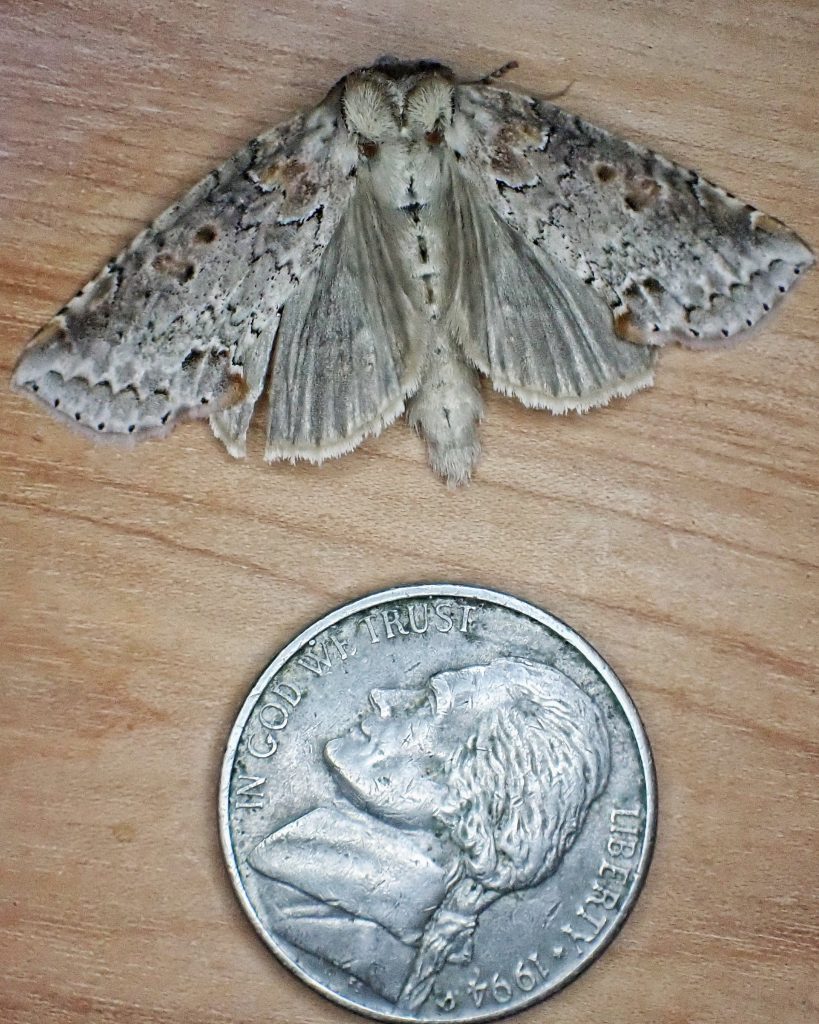
Habitat– “This species is common in a variety of moist forests. It occurs in coastal rainforests at low to middle elevations west of the Cascades. It is found in moist mixed hardwood-conifer forests of the Rocky Mountain region and in boreal forest in British Columbia.” PNW Moths | Pseudothyatira cymatophoroides
Range– “across southern Canada, and all of United States except the Gulf Coast states” Species Pseudothyatira cymatophoroides – Tufted Thyatirid – Hodges#6237 – BugGuide.Net; This species is widely distributed in forests across the Pacific Northwest at least as far north as west-central British Columbia and Haida Gwaii. It occurs to southern Oregon west of the Cascade Range. It has not yet been collected in eastern Oregon, but occurs in the immediately adjacent parts of southwestern Washington and northern Idaho. Pseudothyatira cymatophoroides has been found in southeastern Idaho near the border with Wyoming.” PNW Moths | Pseudothyatira cymatophoroides
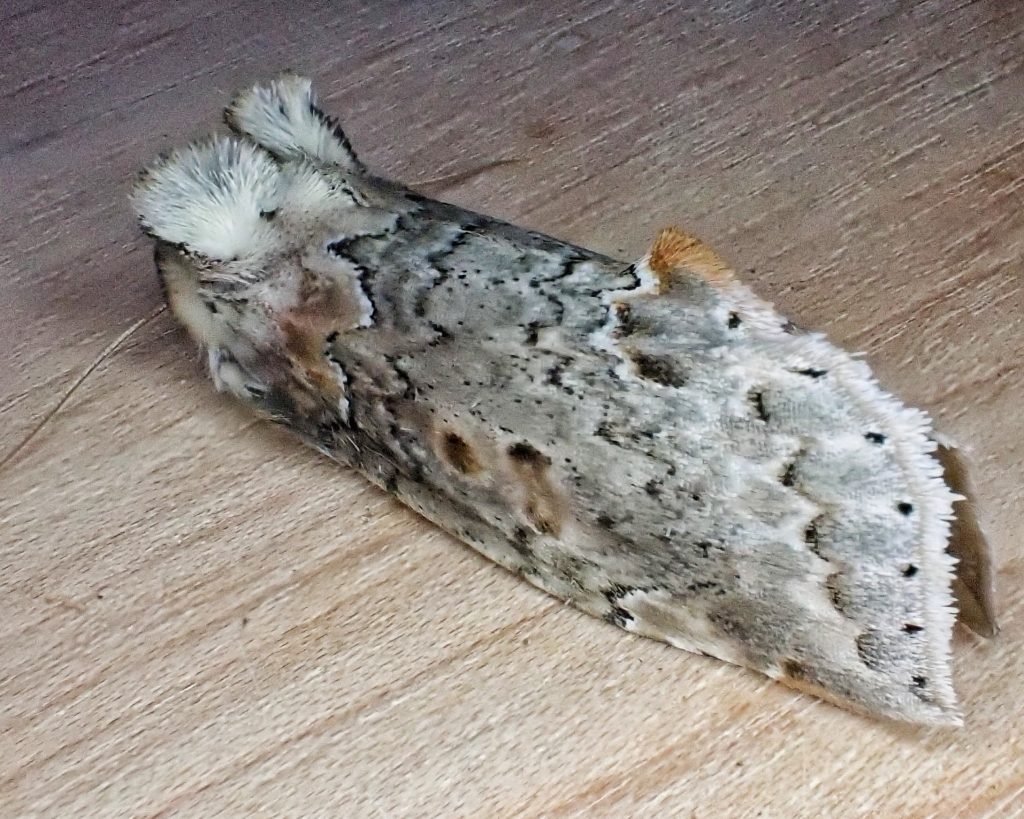
Eats– “This species is a generalist feeding on a wide diversity of hardwood shrubs and trees, but Rubus species in the Rosaceae are particularly favored west of the Cascades.” PNW Moths | Pseudothyatira cymatophoroides; “larvae feed on the leaves of alder, birch, maple, oak, poplar, willow” Species Pseudothyatira cymatophoroides – Tufted Thyatirid – Hodges#6237 – BugGuide.Net
Eaten by– Presumably a host for parasitoids in Hymenoptera and Diptera, and probably preyed upon by insectivores of all classes, but I can find nothing specific for this species.
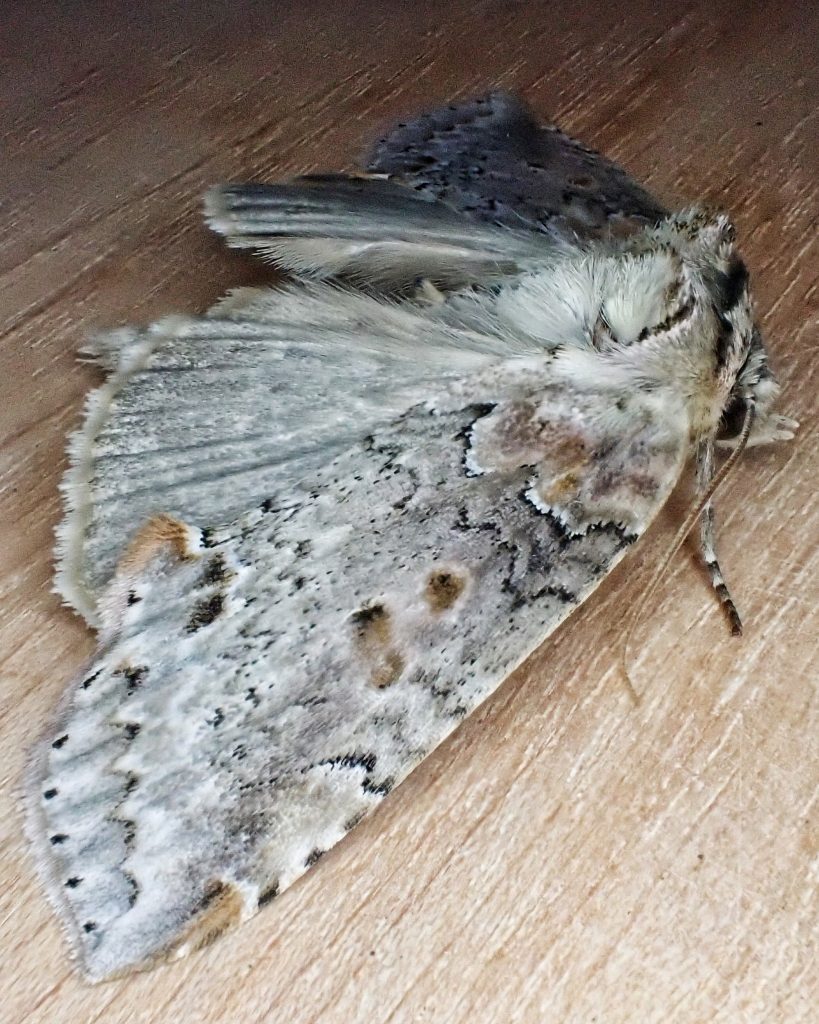
Adults active– “P. cymatophoroides is found in the summer months from early June until late August. It is nocturnal and comes to lights.” PNW Moths | Pseudothyatira cymatophoroides
Life cycle– “The larvae are solitary defoliators on deciduous trees and shrubs. Adults have an unusually extended flight period, and it is possible that there is at least a partial second brood.”
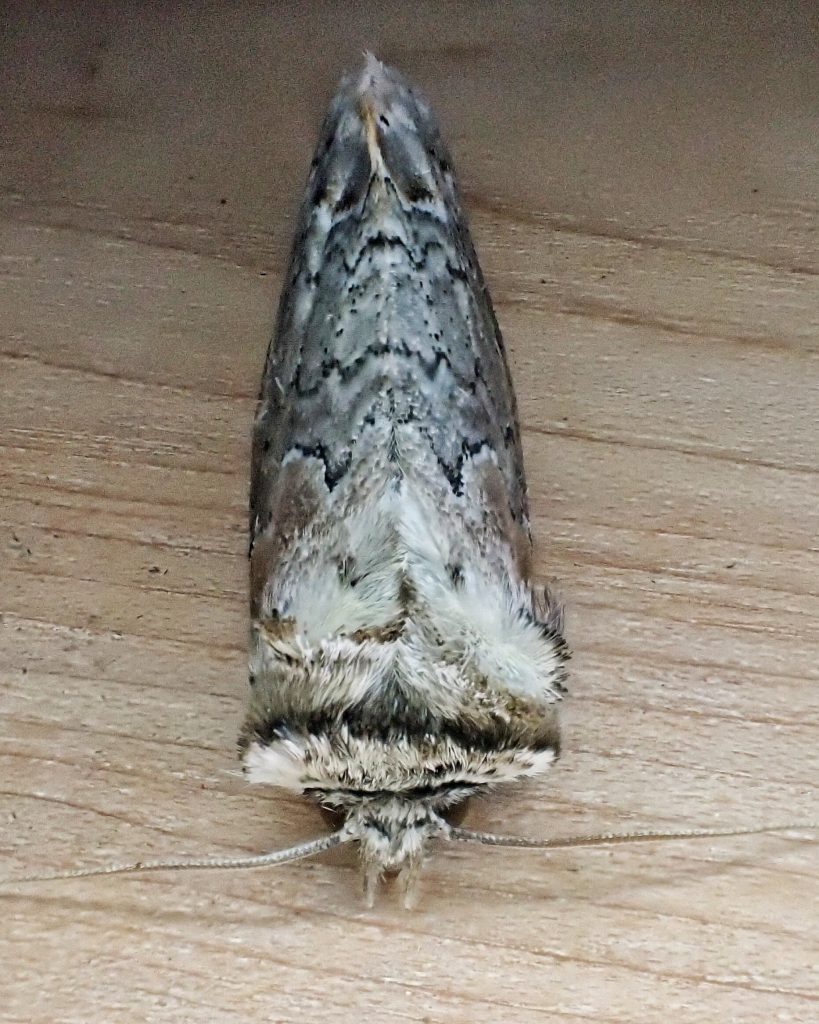
Etymology of names– Pseudothyatira means that it is like the closely related genus Thyatira, a name that is “likely from the city of Thyatira in modern Turkey, mentioned in the New Testament (Revelation 2:18-29) and known as one of the Seven Churches of the Apocalypse.” Subfamily Thyatirinae – False Owlet Moths – BugGuide.Net The specific epithet cymatophoroides just means that it is like the Cymatophora approximaria (the giant grey moth), and that genus name means ‘wave bearing’, an allusion to wavy lines which has no application for this species.
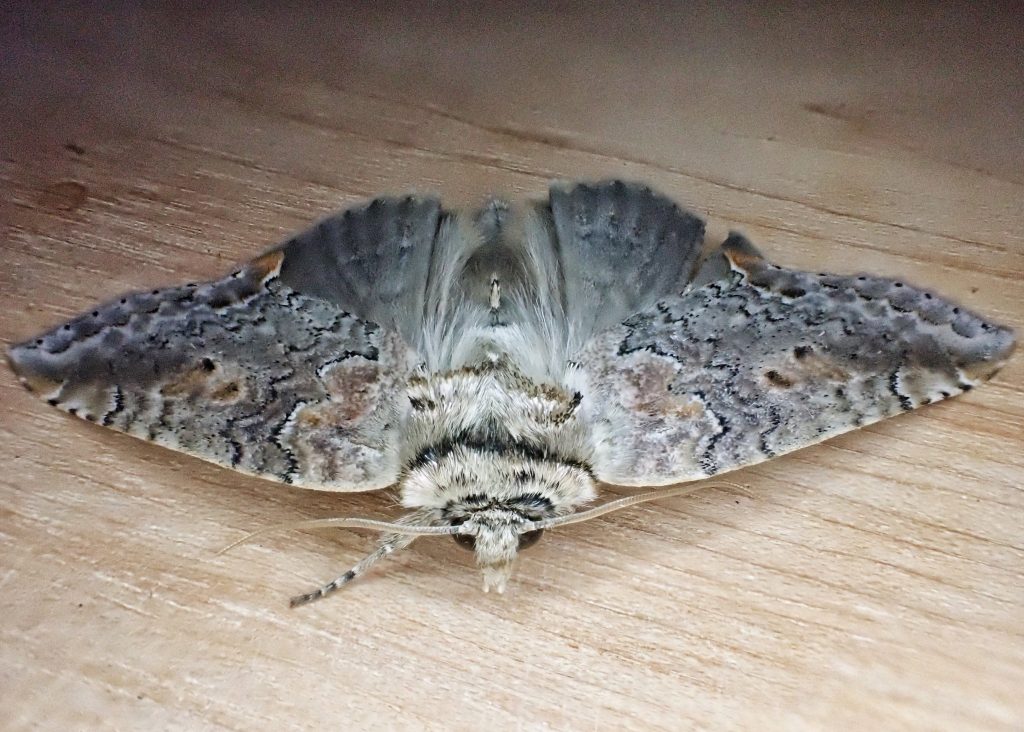
PNW Moths | Pseudothyatira cymatophoroides
Species Pseudothyatira cymatophoroides – Tufted Thyatirid – Hodges#6237 – BugGuide.Net
Pseudothyatira cymatophoroides – University of Alberta Museums Search Site
Pseudothyatira cymatophoroides
http://mothphotographersgroup.msstate.edu/species.php?hodges=6237
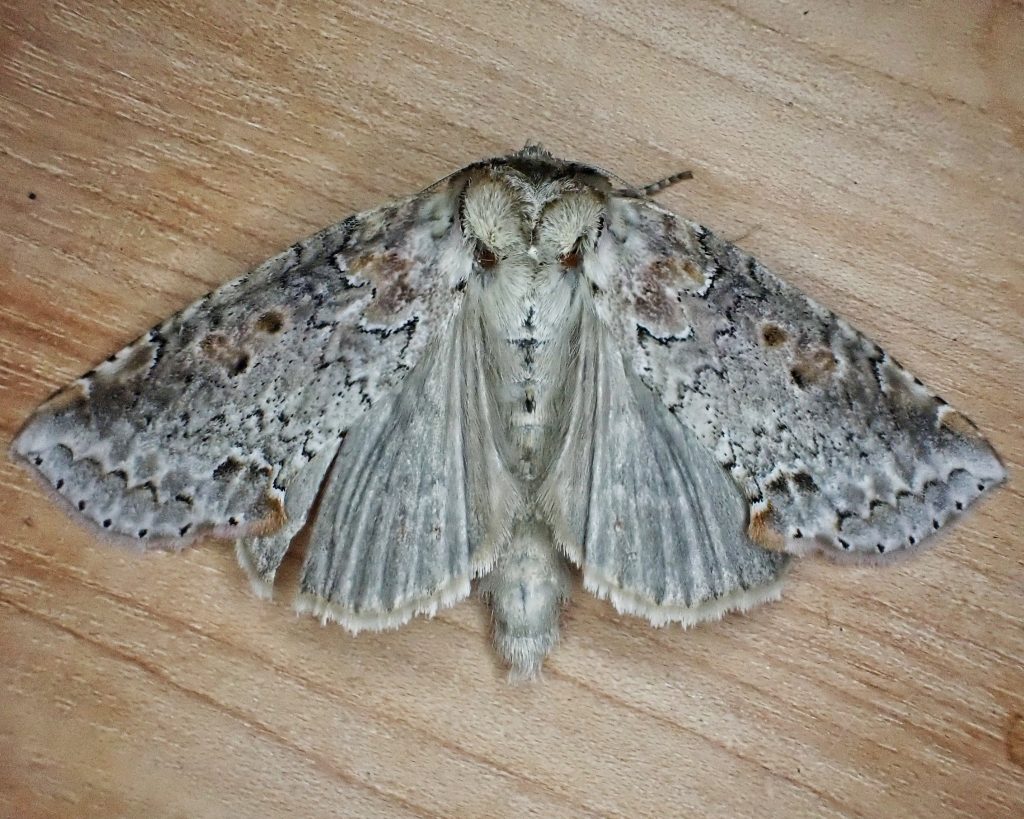
The hind wings look like a pleated skirt.
Are the tufts its antennae?
No, they’re just a fancy hairdo, Jodi. The antennae come out right above their eyes.